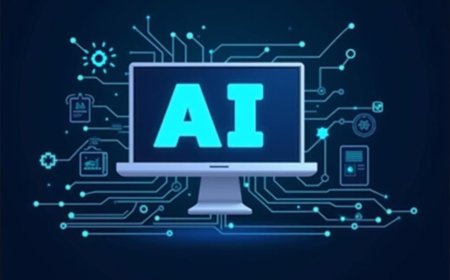How Gamification is Making Learning Fun and Effective
Gamification, the use of game design and mechanics in non-game contexts, has been increasingly adopted in educational settings to make learning more engaging and effective. By incorporating elements such as points, badges, leaderboards, and challenges, educators can create a more interactive and immersive learning experience that motivates students to learn and achieve their goals.
The concept of gamification is based on the idea that games are inherently engaging and can be used to drive behavior and motivate individuals to achieve specific goals. In the context of education, gamification can be used to make learning more enjoyable and interactive, increasing student engagement and motivation. By leveraging game design principles and mechanics, educators can create learning experiences that are more effective and enjoyable, leading to improved academic outcomes and increased student satisfaction.
One of the key benefits of gamification in education is its ability to increase student engagement and motivation. By incorporating game elements such as points, badges, and leaderboards, educators can create a sense of competition and achievement that motivates students to learn and achieve their goals. For example, a language learning app might use a points system to reward students for completing lessons and achieving specific milestones, while a math game might use a leaderboard to rank students based on their performance.
Gamification can also be used to make learning more interactive and immersive. By incorporating game mechanics such as challenges, puzzles, and simulations, educators can create learning experiences that are more engaging and interactive, increasing student participation and motivation. For example, a science simulation game might allow students to conduct experiments and explore scientific concepts in a virtual environment, while a history game might use a puzzle-based approach to teach students about historical events and figures.
In addition to increasing student engagement and motivation, gamification can also be used to improve learning outcomes. By providing immediate feedback and assessment, gamification can help students track their progress and identify areas for improvement. For example, a math game might provide immediate feedback on student performance, allowing students to adjust their approach and improve their results. Similarly, a language learning app might use a spaced repetition algorithm to review material at optimal intervals, helping students to retain information and build long-term knowledge.
Gamification can also be used to promote collaboration and teamwork. By incorporating game mechanics such as team challenges and collaborative puzzles, educators can create learning experiences that encourage students to work together and share knowledge. For example, a team-based science game might require students to work together to solve a complex problem or complete a challenging task, while a collaborative language learning app might allow students to practice their language skills with peers.
Another benefit of gamification in education is its ability to provide personalized learning experiences. By using data and analytics to track student progress and adapt the learning experience to individual needs, gamification can help educators create learning experiences that are tailored to the needs and abilities of each student. For example, a math game might use adaptive technology to adjust the difficulty level of challenges based on student performance, while a language learning app might use a personalized learning plan to tailor the learning experience to the needs and goals of each student.
Despite the many benefits of gamification in education, there are also some challenges and limitations to consider. One of the key challenges is ensuring that gamification is used in a way that is aligned with learning objectives and outcomes. By carefully designing and implementing gamification elements, educators can ensure that they are used to support learning goals and objectives, rather than simply providing entertainment.
Another challenge is ensuring that gamification is accessible and inclusive for all students. By designing gamification elements that are accessible and usable for students with disabilities, educators can ensure that all students can participate and benefit from gamification. For example, a game might provide audio descriptions or text-to-speech functionality to support students with visual impairments, while a language learning app might provide closed captions or subtitles to support students with hearing impairments.
In conclusion, gamification is a powerful tool for making learning more fun and effective. By incorporating game design and mechanics into educational settings, educators can create learning experiences that are more engaging, interactive, and immersive, increasing student motivation and achievement. While there are some challenges and limitations to consider, the benefits of gamification in education are clear, and it is likely to continue to play an important role in shaping the future of learning.
As technology continues to evolve and improve, it is likely that gamification will become even more sophisticated and effective. For example, the use of virtual and augmented reality technologies is likely to become more prevalent in educational settings, allowing for even more immersive and interactive learning experiences. Similarly, the use of artificial intelligence and machine learning is likely to enable more personalized and adaptive learning experiences, tailored to the needs and abilities of each student.
Overall, gamification has the potential to revolutionize the way we learn by making it more fun, interactive, and effective. By leveraging game design and mechanics, educators can create learning experiences that are more engaging and motivating, leading to improved academic outcomes and increased student satisfaction. As the use of gamification in education continues to grow and evolve, it is likely to have a profound impact on the way we learn and teach, shaping the future of education for generations to come.
To further illustrate the effectiveness of gamification in education, let's consider a few examples of successful gamification initiatives. For instance, a popular language learning app has used gamification to make language learning more engaging and interactive, with features such as points, badges, and leaderboards. The app has been highly successful, with millions of users worldwide and a high level of user engagement.
Another example is a math game that uses a game-based approach to teach math concepts to students. The game has been shown to be highly effective in improving math skills and increasing student motivation, with studies demonstrating significant improvements in student outcomes.
These examples demonstrate the potential of gamification to make learning more fun and effective, and highlight the importance of careful design and implementation to ensure that gamification is used in a way that is aligned with learning objectives and outcomes. By continuing to explore and develop new approaches to gamification, educators can create learning experiences that are more engaging, interactive, and effective, leading to improved academic outcomes and increased student satisfaction.
In the future, it is likely that gamification will continue to play an increasingly important role in education, as technology continues to evolve and improve. By staying at the forefront of developments in gamification and education, educators can ensure that they are well-positioned to take advantage of new opportunities and approaches, and to create learning experiences that are more effective and enjoyable for students.
As we look to the future, it is clear that gamification has the potential to revolutionize the way we learn, making it more fun, interactive, and effective. By leveraging game design and mechanics, educators can create learning experiences that are more engaging and motivating, leading to improved academic outcomes and increased student satisfaction. With its potential to increase student engagement, motivation, and achievement, gamification is likely to continue to play a key role in shaping the future of education.

















